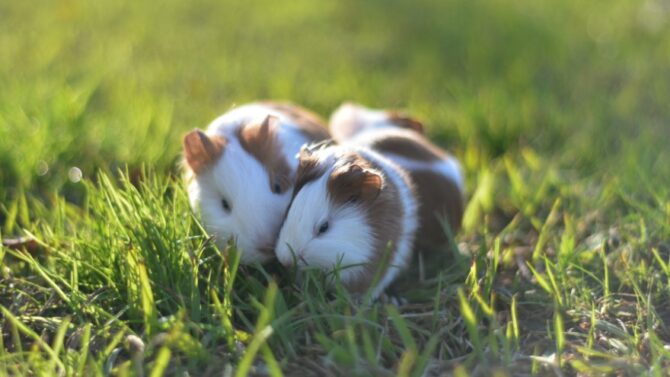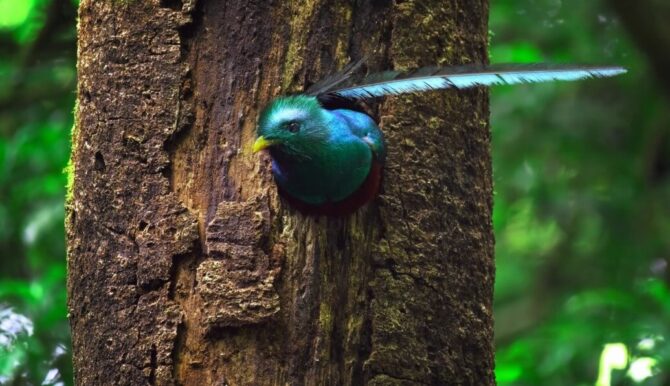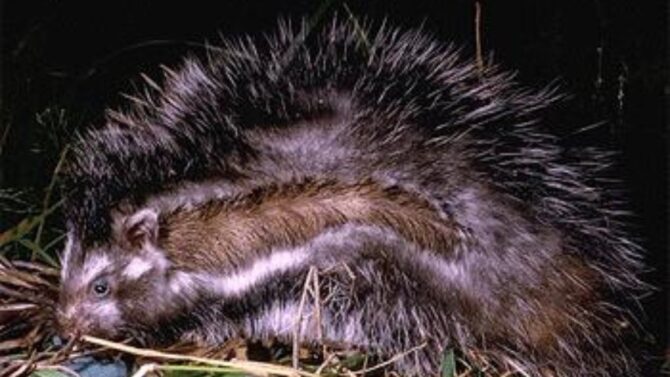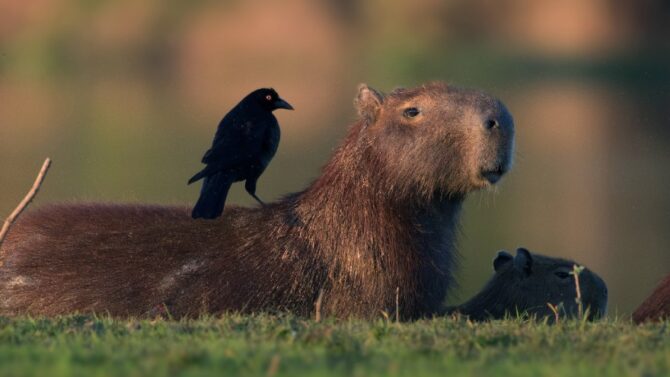Hamsters are little cute, furry, and interesting creatures that most people fancy as pets despite their being slightly difficult to handle.
They have proven to be very friendly, and when taken good care of, hamsters form strong attachments with their owners.
There are over 20 hamster species today, but only five breeds are popular as pets:1 the Roborovski dwarf hamster, the Syrian hamster or golden hamster, the Campbell’s Russian dwarf hamster, the Chinese hamster, and the winter white dwarf hamster.
This article will give an overview of the different types of hamsters that exist and offer more details about the five most popular hamster breeds. Read on to learn more.
Brief Overview of Hamsters
Hamsters are rodents that are well known for being good-mannered pets.
Although they are usually mistaken as herbivores, hamsters are omnivores, feasting on fresh vegetables and fruits (especially apples, pears, broccoli, cauliflowers, and carrots) and occasionally insects.
They come out mostly at night. Their length ranges between 2 to 14 inches, and they have short tails and tiny eyes. Their fur can be black, white, gray, beige, golden, or brown.
Hamsters scavenge for food and store it in their cheek pouches. Their feet are large for their size, with four toes in front and five toes at the back.
Like most types of rodents, hamsters possess large front teeth that never stop growing during their lifetime.
Large hamsters seem to prefer solitude. When a number of hamsters are put together, they usually fight for dominance, which could end in grave injuries (Syrian hamsters are an example).
However, dwarf hamsters can coexist with hamsters of the same sex without issues.2 Hamsters are generally very well-behaved with humans and rarely bite.
They are also crepuscular: they mostly sleep during the day and are active at night.
Amongst the over 20 existing hamster species, only five are well-known as pets.
5 Popular Types of Hamsters
1. Roborovski Dwarf Hamster
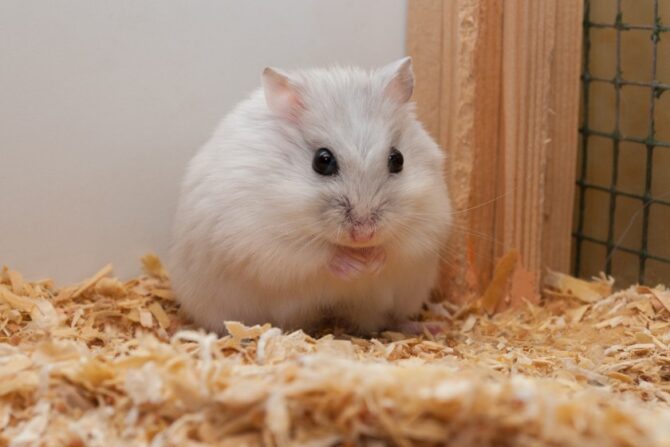
Physical Features
Of all the popular hamster species, the Roborovski dwarf hamster (Phodopus roborovskii) is the smallest.
At maturity, this hamster can grow up to 2 inches tall and weigh between 20 and 25 g. Its life expectancy ranges from 2–3 years.
Distinguishing features of the Roborovski dwarf hamster include the white marks on its eyelids, its straight ears, and the light brown color with white fur on its stomach.
Housing
Roborovski dwarf hamsters are best housed in an aquarium with a mesh lid. Wire cages are not recommended because these hamsters can easily escape from them due to their small size.
Roborovski dwarf hamsters also don’t like to be touched and are very possessive of their belongings.
Behavioral Traits
Roborovski dwarf hamsters are very agile and active by nature. Caring for this breed requires a lot of time, patience, and attention.
Roborovski dwarf hamsters also need toys for entertainment, bowls for feeding, and water bottles for drinking. If you own more than one hamster, they will each require theirs.
Hygiene
When it comes to cleaning Roborovski dwarf hamsters, dust baths are highly favored. However, they are not recommended for first-time hamster owners.
Extra Information
Roborovski dwarf hamsters have a very high metabolism, so they require constant feeding.
2. Syrian Hamster
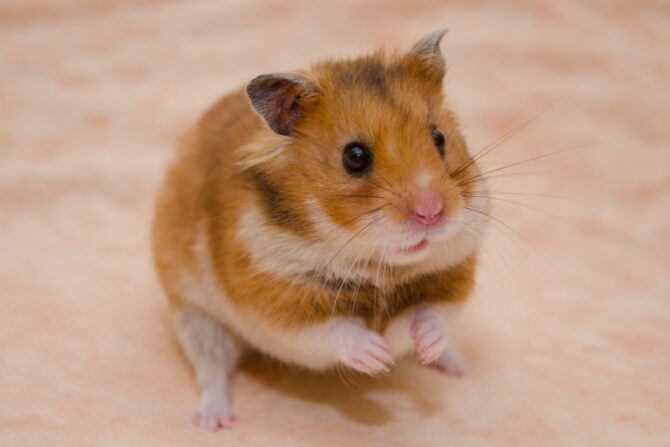
Physical Features
Also known as golden or teddy hamsters, Syrian hamsters (Mesocricetus auratus) are very common pets because of their gentle nature and their furry bodies.
They are considered to be the friendliest of all hamster species and are usually golden brown, with a lighter color on their belly. They also have short tails, small eyes, and medium-sized cheek pouches.
Syrian hamsters usually grow to about 14–19 cm long and weigh between 110–140 g. They can also live as long as three years.3
Housing
Syrian hamsters are larger than other hamster breeds, so they need a sizable cage with a hamster wheel to exercise and expend excess energy.
Behavioral Traits
Syrian hamsters are fairly easy to handle and prefer to be left alone. When put in groups, fights tend to break out.
Hygiene
Syrian hamsters should be brushed with a soft toothbrush. To clean them, a tub with bath powder should be placed in their cage and must be changed twice monthly. Their hair grows fast, which makes them require constant trimming.
If ever you perceive a bad odor coming from your golden hamster, it might be suffering from wet tail disease, which is very common among this species and caused by stress.
To prevent this disease, veterinarians strongly recommend using wet tail drops the first time you take the hamster home.
Extra Information
Syrian hamsters are highly recommended to owners of any age and level of experience as long as they’re patient and dedicated to grooming the hamsters.
3. Campbell’s Dwarf Hamster
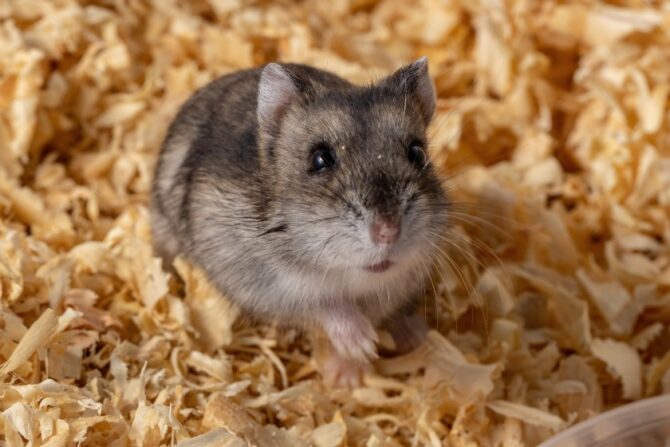
Physical Features
Campbell’s dwarf hamsters (Phodopus campbelli) are fairly round and small, which makes them look very cute.
Some of their nicknames include yellow pudding, blue pudding, or sapphire pudding, depending on the color of their coat.
They are 10 cm long and weigh about 27 g. Their life expectancy is one of the shortest among hamsters, varying between 18 to 24 months.
Campbell’s dwarf hamsters are often gray or brown but can be found in other shades. The fur on their belly is light gray, and they have large, straight ears attached to their very thin faces.
Housing
When their habitat is inconvenient, Campbell’s dwarf hamsters will try to escape from it.
To prevent this, house them in a well-ventilated cage with enough hiding spots to retreat to.
Campbell’s dwarf hamsters are naturally shy and prefer not to be seen while sleeping to feel safe.
Behavioral Traits
Campbell’s dwarf hamsters are very stubborn but get scared easily. When they are scared, they usually nip whoever is carrying them at the time.
Campbell’s dwarf hamsters are also very affectionate; they love being pampered and will stay awake as long as you are.
Health
Unlike other hamster breeds, Campbell’s dwarf hamsters can suffer from diabetes.
This means that their meals should contain more protein and fewer fruits to keep their sugar levels balanced.
Hygiene
Grooming Campbell’s dwarf hamsters doesn’t require much effort; simply make sure there’s a dust bath in their cage and change it once every two weeks.
4. Chinese Hamster

Physical Features
As their name implies, Chinese hamsters (Cricetulus griseus) originate from the deserts of China and Mongolia. People often mistake them for mice because of their pointed noses and long tails.
At maturity, their length ranges from 8.2 to 13 cm while they weigh between 30 and 45 g, making them the heaviest of all hamsters. They can live as long as three years or slightly longer.
They have round and upright ears, with pointed noses, and their tails are longer than those of other hamster breeds.
Housing
Female Chinese hamsters are best housed in separate cages, as they tend to get violent with age. As for the males, littermates can be kept together.
When this is not the case, it’s best to put them in separate cages until you are sure they will not attack one another.
Behavioral Traits
Chinese hamsters need constant affection to interact constantly with their environment, or they will become temperamental.
They are also extremely territorial but balance this out by being very friendly. However, they can get destructive when bored or left alone.
Hygiene
To make sure they are clean, install a sizable bath area in the cage so that your Chinese hamsters can groom themselves.
Spotting dirty patches in their fur that need extra cleaning is not hard, seeing as they enjoy being held.
Extra Information
The Chinese hamster is suitable for old hamster owners or people with experience caring for pets. They are unsuitable for children or first-time hamster owners.
5. Winter White Dwarf Hamster

Physical Features
Also known as the Djungarian or Siberian hamster, the winter white dwarf hamster (Phodopus sungorus) comes from cold regions. Their coats can turn pure white, helping them blend with the background to hide from predators. 4
Their physical features are quite similar to those of Campbell’s dwarf hamster; the main difference is that the winter white dwarf hamster has furry feet, tinier ears, and a larger dorsal stripe on their backs.
Their size varies between 7 to 10 cm, and they weigh between 19 to 45 g. Their life expectancy is 18 to 24 months, much like the Campbell’s dwarf hamster.
As for their coats, they are mostly gray or brown, although this color changes to white in the winter. Their coats are also thick and fluffy, and they have a dorsal line along their backs.
These hamsters also have small ears, furry feet, and very round faces, making them very adorable as pets.
Housing
Small tanks are ideal for housing winter white dwarf hamsters. As they are very small, they can easily slip through the gaps of a normal hamster cage.
Winter white dwarf hamsters love climbing and are extremely agile, so make sure there are many toys in their cage.
The cage should also be split into different areas to keep the hamster fully entertained.
Behavioral Traits
Winter white dwarf hamsters are sweet, calm, sociable, and very active.
Taming them is easy, and they enjoy the company of hamsters of the same sex. They also don’t tire easily and are very energetic.
Hygiene
A dust bath is more than enough to keep a white winter hamster clean.
P.S: Giving any type of hamster a wet bath is dangerous.
Wrapping Up
Hamsters are indeed extremely cute and cuddly creatures that many people love keeping as pets. However, they require full commitment when it comes to grooming, feeding, and training them.
Each hamster breed has its own special needs and behaviors, which can slightly or completely change as they age.
That’s why it’s important not to rush the decision of buying or adopting a hamster.
So, take your time to carefully consider all the important factors. This will ensure the best experience for both you and your new furry friend.
References & Notes
- Hamsters: From the Wild to Your Bedroom. National Geographic Kids
- Dwarf Hamsters Are Social. California Hamster Association
- Syrian Hamster – an overview. ScienceDirect
- Phodopus – an overview. ScienceDirect.
